Don’t Overlook Cabling When It Comes To Fire Safety
9th March 2011
Source:
Anamet Europe BV
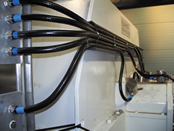
In a fire, toxic fumes can be just as deadly, if not more so, as the flames themselves – and with this in mind, more and more owners of industrial and commercial buildings, supported by their insurers, are insisting that cabling used should be non-toxic.
As a result, Anamet Europe offers a range of halogen free, flexible conduits with steel and stainless steel cores, meaning that they are extremely flame resistant and don’t release toxins that could cause lung damage during a fire.
The need for zero halogen cabling was first identified by investigators of the Kings Cross Fire, who quickly realised that it was toxic fumes within the smoke that had caused the majority of the deaths rather than the flames themselves.
As a result, the entire London underground went halogen free. Other industries that presented a high fire risk followed their lead - but it is now believed that it is important for many businesses where staff work within a sealed environment such as food and process industries to make the switch too.
The problem is that many electrical system components contain PVC, which in most everyday conditions is extremely stable, but when subjected to high temperatures its component halogens separate and give off toxic gasses - the most dangerous of these is Hydrogen Chloride.
At room temperature, Hydrogen Chloride is a colourless, non-flammable gas with an unpleasant, acrid odour. However, it dissolves in water to form hydrochloric acid – and only minute levels of moisture are required to precipitate a change, such as those found in the air, or even within a person’s eyes or lungs. Reactions to contact with Hydrogen Chloride can vary from skin and eye irritation, nausea and dizziness to severe chemical burns. And of course, add the fact that water is widely used to quench fire, and the results can be truly devastating.
But whilst the dangers of thick acrid smoke in preventing people from finding their way to escape a building is well documented, there is another hidden danger caused by toxic fumes. It can permeate electrical equipment, corroding circuit boards, which could then fail without warning. Given that the Intelligent Building Technologies that control systems such as PA systems, evacuation systems, CCTV networks and even sprinklers are all operated using circuit boards, the damage could be catastrophic.
Anamet now offers three different flexible conduit types, HFX, ZHLS and HFI, which provide a range of different properties, such as flexibility, suitability for use in installations subject to frequent movement such as lifts or high flame resistance – but crucially, they are all designed to be completely zero halogen both in terms of the conduit covers, the steel or stainless steel core and the accompanying fittings.
“Its fair to say that electrical power and control systems are fundamental to the smooth running of our daily lives,” said Ed Dickson, UK Sales Representative of Anamet Europe. “There’s no way that our business systems could operate without them, so it’s imperative that specifiers understand the dangers that PVC in electrical systems can present.
“Making the switch to halogen free HFX, ZHLS and HFI conduit systems, in enclosed working environments in even apparently low-risk properties, could mean the difference between life and death.”
Anamet Europe BV was founded in Holland more than 60 years ago and now supplies Europe, the Middle East and Asia. The company specialises in the supply of a range of flexible connection and protection systems for cables, pipes and hoses and offers a wide range of products to suit a variety of different industry applications.
The company’s staff are highly trained and are on-hand to provide customers with the in-depth technical information required to assist in suitable product choice.
The need for zero halogen cabling was first identified by investigators of the Kings Cross Fire, who quickly realised that it was toxic fumes within the smoke that had caused the majority of the deaths rather than the flames themselves.
As a result, the entire London underground went halogen free. Other industries that presented a high fire risk followed their lead - but it is now believed that it is important for many businesses where staff work within a sealed environment such as food and process industries to make the switch too.
The problem is that many electrical system components contain PVC, which in most everyday conditions is extremely stable, but when subjected to high temperatures its component halogens separate and give off toxic gasses - the most dangerous of these is Hydrogen Chloride.
At room temperature, Hydrogen Chloride is a colourless, non-flammable gas with an unpleasant, acrid odour. However, it dissolves in water to form hydrochloric acid – and only minute levels of moisture are required to precipitate a change, such as those found in the air, or even within a person’s eyes or lungs. Reactions to contact with Hydrogen Chloride can vary from skin and eye irritation, nausea and dizziness to severe chemical burns. And of course, add the fact that water is widely used to quench fire, and the results can be truly devastating.
But whilst the dangers of thick acrid smoke in preventing people from finding their way to escape a building is well documented, there is another hidden danger caused by toxic fumes. It can permeate electrical equipment, corroding circuit boards, which could then fail without warning. Given that the Intelligent Building Technologies that control systems such as PA systems, evacuation systems, CCTV networks and even sprinklers are all operated using circuit boards, the damage could be catastrophic.
Anamet now offers three different flexible conduit types, HFX, ZHLS and HFI, which provide a range of different properties, such as flexibility, suitability for use in installations subject to frequent movement such as lifts or high flame resistance – but crucially, they are all designed to be completely zero halogen both in terms of the conduit covers, the steel or stainless steel core and the accompanying fittings.
“Its fair to say that electrical power and control systems are fundamental to the smooth running of our daily lives,” said Ed Dickson, UK Sales Representative of Anamet Europe. “There’s no way that our business systems could operate without them, so it’s imperative that specifiers understand the dangers that PVC in electrical systems can present.
“Making the switch to halogen free HFX, ZHLS and HFI conduit systems, in enclosed working environments in even apparently low-risk properties, could mean the difference between life and death.”
Anamet Europe BV was founded in Holland more than 60 years ago and now supplies Europe, the Middle East and Asia. The company specialises in the supply of a range of flexible connection and protection systems for cables, pipes and hoses and offers a wide range of products to suit a variety of different industry applications.
The company’s staff are highly trained and are on-hand to provide customers with the in-depth technical information required to assist in suitable product choice.
Similar articles
More from Anamet Europe BV
- Don’t Overlook Cabling When It Comes To Fire Safety 9th March 2011
- Anamet’s New Anaflex Systems Offers Quick-fit Cable Protection 22nd September 2010
- Protect Your Cables From Extreme Temperatures Thanks To Anamet 24th June 2010


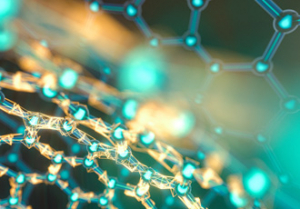
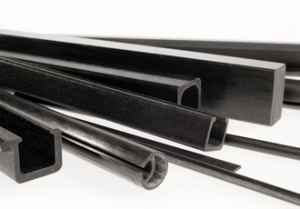

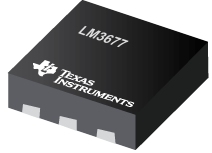

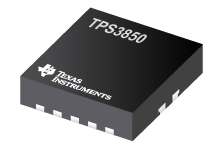


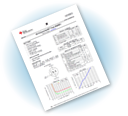

Write a comment
No comments